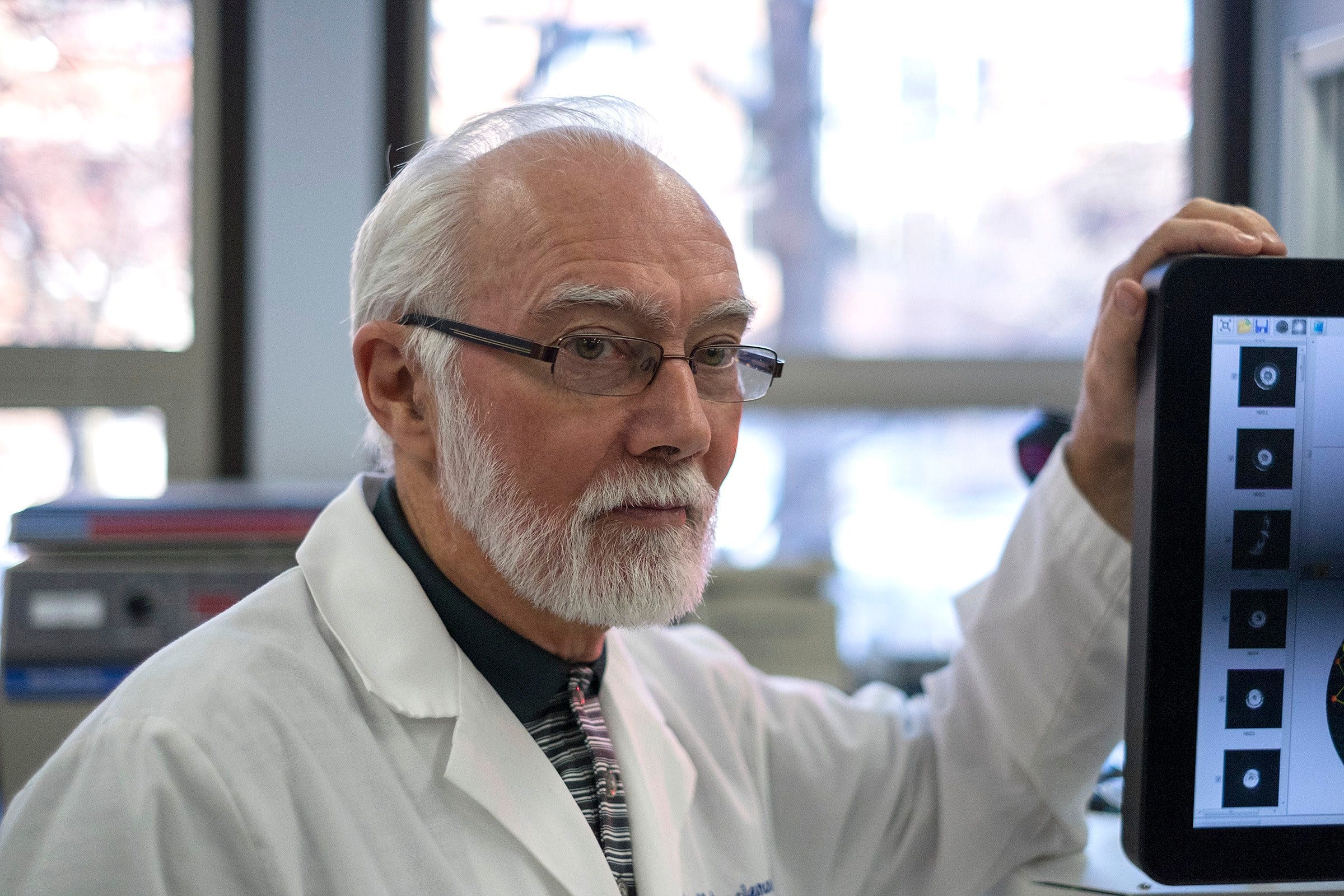Blu-ray Cancer Detection Could Make Purdue Prof ‘Star of the Show’
 Robinson's technology involves modifying Blu-ray players and discs.
Robinson's technology involves modifying Blu-ray players and discs.
Subscriber Benefit
As a subscriber you can listen to articles at work, in the car, or while you work out. Subscribe NowBlu-ray may not be for just watching movies anymore—a Purdue University researcher is confident it can also detect cancer. It’s a seemingly impossible leap from entertainment system to diagnostic, but the same technology—invisible to the naked eye—that puts movies on the screen could also detect tiny cancer particles that conventional lab equipment cannot. And the National Institutes of Health (NIH) is buying in; the researcher’s startup Cytomics Analytical LLC earned a grant to prove the concept, which—in the scientific world—would make him a movie star of a different sort.
Cytomics Analytical Chief Scientific Officer Dr. J. Paul Robinson is repurposing Blu-ray players and discs to hunt down tiny cancer nanoparticles. Robinson, also SVM Professor of Cytomics, says the nanoparticles are pieces of cancer cells that have broken off as the immune system attempts to destroy them. They float around in the bloodstream in huge numbers during the earliest stages of cancer—even before a tumor has formed.
“These particles are difficult, almost impossible, to see,” says Robinson. “These particles are below the diffraction limit of light, so you can’t see them under a regular microscope, and you can’t see them on normal laboratory tools. We have not, to this day, had an easy-to-use technology for looking at these very, very small particles.”
Cytomics Analytical is developing MY-Blu, a system that would “see” these nanoparticles with modified Blu-ray players. The read head on a Blu-ray player that is reading the video on the disc relies on three signals to stay perfectly aligned and inside its intended track. Blu-ray discs also have extremely small pits that the read head measures.
“By combining those three signals that are all related to how the read head stays perfectly aligned,” says Robinson, “we can—instead of measuring a pit that would be on the disc—measure a particle on the disc.”
That’s because Robinson has also modified the Blu-ray discs, pressing special grooves—microfluidic channels—into the disc, instead of the standard pits.
“We put these nanoparticles into the disc we’ve made with microfluidic channels, and when the read head sees that particle, it actually thinks it’s a pit, and it measures its properties,” says Robinson. “In order to detect these cancer-related particles, we need one more signal—a fluorescence detection technology.”
This is the specific effort the $150,000 NIH Phase I Small Business Innovation Research (SBIR) grant is funding, along with the Indiana Economic Development Corporation’s matching $50,000 grant. The Cytomics Analytical team is working to adapt the Blu-ray player to detect fluorescent molecules the researchers attach to the cancer nanoparticles. Robinson is confident the team will be using MY-Blu to look at human blood within the next few months.
MY-Blu is perhaps an example of research coming full-circle at Purdue. Robinson originally developed the technology that is now used in the Blu-ray system; Sony Corporation licensed the technology from the Purdue Research Foundation to create Blu-ray.
Also playing a “starring role” in adapting the movie technology for cancer detection is Masanobu Yamamoto, Cytomics Analytical chief technology officer. Yamamoto was a long-time Sony lead engineer and the key developer of Blu-ray and is now a Purdue adjunct professor.
“When he retired [from Sony], he called me up and said, ‘Oh, would you be interested in forming a small company that’s looking at developing some new technology?’” says Robinson. “It took me about a micro-second to say, ‘Absolutely.’”
Robinson believes the low cost of MY-Blu is its key selling point. Only electron microscopy is able to detect the cancer nanoparticles now, and the method is extremely difficult, slow and expensive. In contrast, Blu-ray technology already exists, and the hardware is readily available. Robinson says MY-Blu simply gives the movie technology “a new purpose in life”—to play the role of hero as it aims to detect the most infamous villain of all.
Robinson says the NIH grant provides validation and will help push the startup to its next milestone.
Robinson says “the whole idea” of MY-Blu is to make it inexpensive, so it could be used broadly.
